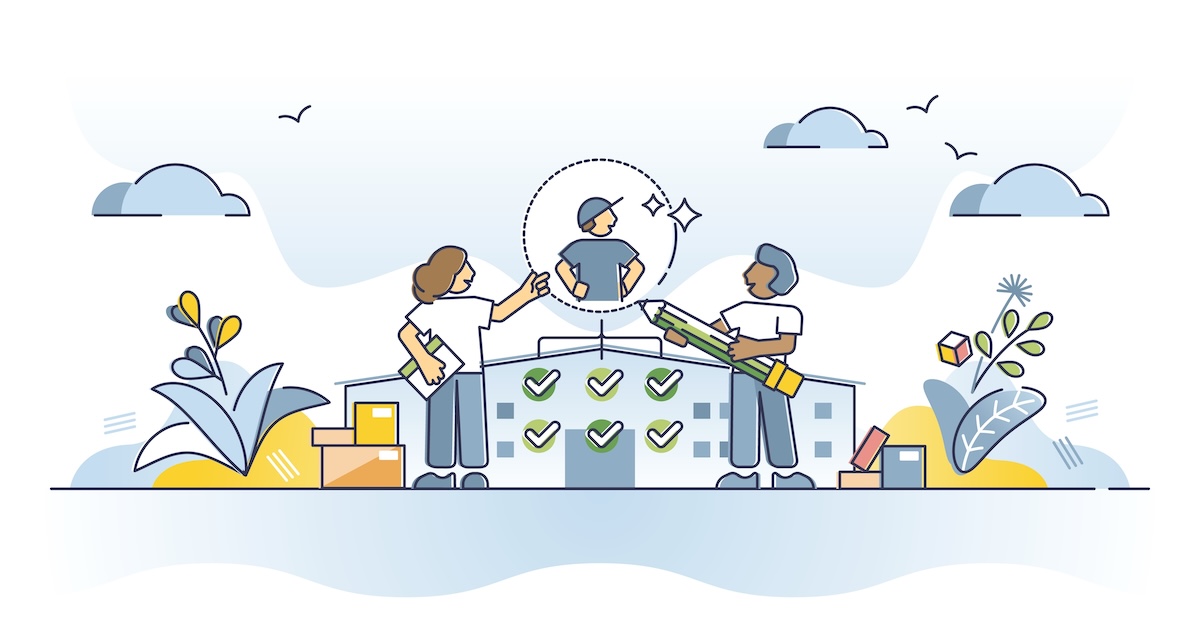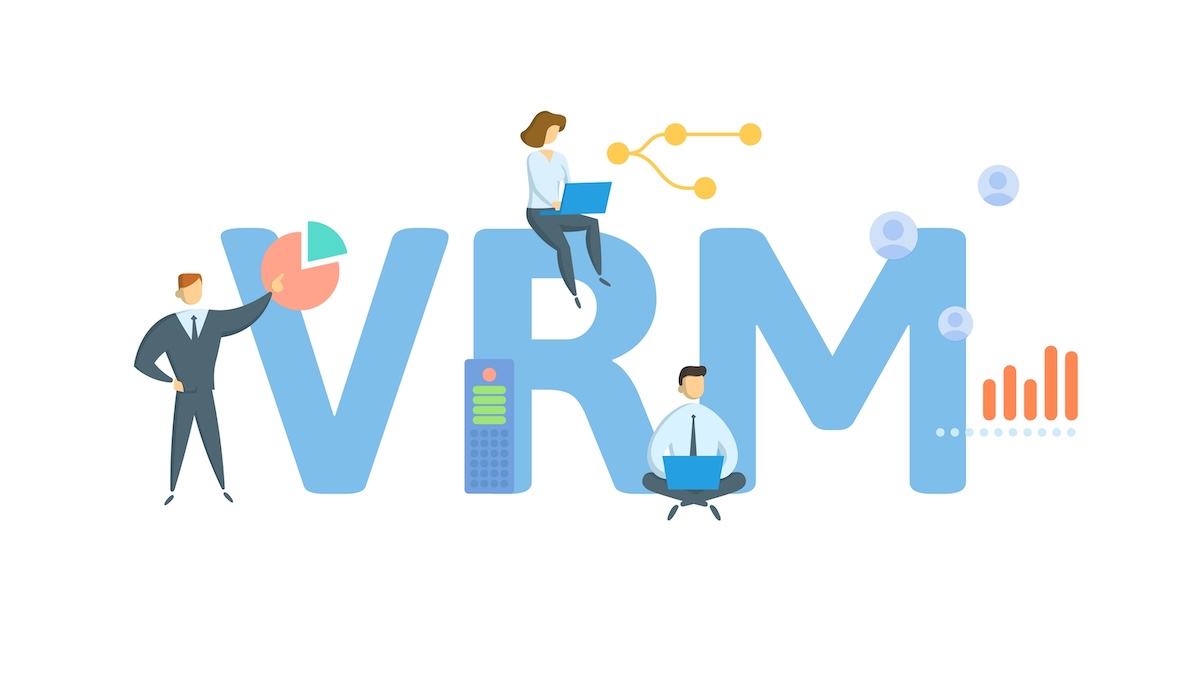Navigating the complexities of vendor relationships in your distribution business? Discover strategies and tools for mastering Vendor Relationship Management (VRM) to drive efficiency and growth. Learn how to enhance supplier partnerships and streamline your operations for better performance.
In the bustling world of distribution, managing your relationships with suppliers is key to keeping the wheels turning smoothly. It’s not just about transactions; it’s about forging strong partnerships that drive efficiency and growth for your business. Vendor Relationship Management (VRM) is the linchpin in this process, ensuring a steady flow of products from suppliers to retail stores. This article will explore the ins and outs of VRM and vendor relationship management strategies. We’ll shed light on its importance, and offer strategies to enhance these crucial relationships.
Understanding Vendor Relationship Management
What Exactly is Vendor Relationship Management?
Think of VRM as the strategic framework that strengthens the bond between your company and the suppliers that stock your inventory. For those in the distribution sector, where the range of products often spans from food and beverages to other important products, mastering VRM is critical. It’s about ensuring that the right products are available at the right time while meeting the ever-changing demands of your retail customers.
Why VRM Matters for Distributors
The pace of the distribution industry demands agility and foresight. Distributors are tasked with balancing a myriad of supplier relationships, adapting to market shifts, and ensuring timely deliveries. Here’s where VRM steps in as a crucial ally, helping you to:
- Streamline your supply chain for peak efficiency.
- Negotiate effectively with suppliers to secure favorable terms.
- Guarantee that retail stores receive their orders on time, keeping their offerings diverse and appealing to consumers.
- Cultivate mutually beneficial partnerships with suppliers, focusing on shared growth and success.
By excelling in VRM, you’re not just keeping up; you’re setting the pace, ensuring your distribution network operates seamlessly and responsively to the needs of retail store operators and managers.

Key Strategies for Effective Vendor Relationship Management
Navigating the complex waters of vendor relationships requires a blend of strategy, communication, and technology. Here’s how you can elevate your VRM game:
1. Develop Strategic Partnerships: Look beyond the transactional nature of buying and selling. Aim to build partnerships with suppliers that are rooted in mutual growth and understanding. This involves regular strategy meetings, sharing market insights, and working together on joint initiatives.
2. Enhance Communication: Clear, consistent communication is the backbone of any strong relationship. Establish regular check-ins with your suppliers, utilize technology for real-time updates, and ensure that both parties are always on the same page regarding expectations and deliverables.
3. Monitor Performance and Provide Feedback: Implement a system to regularly assess supplier performance against agreed-upon metrics. Constructive feedback is crucial for continuous improvement and helps in identifying areas where support might be needed to meet your standards.
4. Embrace Technology: Leverage technology to streamline operations and improve transparency. A robust VRM software can offer real-time inventory updates, facilitate smoother transactions, and provide analytics for better decision-making.
5. Resolve Conflicts Proactively: In any partnership, issues are bound to arise. Approach conflicts with a solution-oriented mindset, aiming for resolutions that are fair and beneficial to both parties. This fosters trust and strengthens the relationship over time.
Vendor Relationship Management Process
Understanding the VRM Process
The Vendor Relationship Management (VRM) process is a comprehensive approach to managing your company’s interactions with its suppliers. It’s about creating a system that not only manages but also optimizes these relationships for mutual benefit. Here’s a closer look at the key stages in the VRM process:
- Vendor Selection: This initial phase involves identifying potential suppliers and evaluating them based on criteria such as price, quality, reliability, and service. It’s crucial to conduct thorough due diligence to ensure that the vendors align with your company’s values and operational needs.
- Contract Negotiation: Once a vendor is selected, the next step is to negotiate terms that are favorable to both parties. This includes pricing, delivery schedules, payment terms, and any other conditions relevant to the partnership. Clear, detailed contracts help prevent misunderstandings and disputes down the line.
- Onboarding and Integration: After the contracts are signed, the vendor is onboarded. This stage involves setting up any necessary accounts, integrating systems (if applicable), and ensuring that both parties understand the operational workflows and communication channels.
- Performance Monitoring: With the relationship underway, it’s important to regularly monitor the vendor’s performance against the agreed-upon metrics. This can include quality of goods or services, adherence to delivery schedules, and responsiveness to communication, among other factors.
- Feedback and Improvement: Based on performance evaluations, provide feedback to your vendors. This should be a two-way street, where you also welcome suggestions from vendors on how the relationship or processes can be improved. Use this feedback to refine your VRM strategies and operations.
- Ongoing Relationship Management: The VRM process is cyclical, not linear. It requires continuous attention and nurturing to maintain strong, productive relationships with your vendors. Regular check-ins, updates on business changes, and discussions about future plans are all part of keeping the relationship healthy and mutually beneficial.
Implementing VRM in Your Business
Effective VRM doesn’t happen by accident; it requires a strategic approach and the right tools. Leveraging technology, such as CDR Software’s suite of solutions, can significantly streamline the VRM process. Our tools automate and optimize various aspects of VRM, from order management and inventory control to performance analytics, making it easier to maintain strong vendor relationships and operational efficiency. Keep reading to learn more about our products tailored to the distribution industry.

Understanding the ROI of Effective VRM
Quantifying Benefits
Effective Vendor Relationship Management (VRM) is more than just a good practice; it’s a strategic investment that pays dividends across your entire operation. By prioritizing strong, collaborative relationships with your suppliers, you’re setting the stage for a more resilient, efficient, and customer-focused distribution network. Here’s how:
- Cost Savings: Streamlined operations reduce waste and unnecessary expenses, while strategic negotiations can lower purchasing costs.
- Improved Efficiency: A well-oiled VRM system means fewer delays, faster turnaround times, and a supply chain that can adapt to changes swiftly.
- Higher Customer Satisfaction: When you have the right products in stock at the right time, thanks to reliable vendor partnerships, your end customers—the retail stores—can meet their shoppers’ needs more effectively.
Navigating Challenges in Vendor Relationships
Common Pitfalls
Even with the best intentions, managing vendor relationships can sometimes feel like navigating a minefield. Common challenges include:
- Communication Breakdowns: Misunderstandings or lack of clarity can lead to errors, delays, and frustration on both sides.
- Contract Disputes: Differences in contract interpretation can cause conflicts, potentially harming the partnership.
- Quality Control Issues: Inconsistent product quality from vendors can damage your reputation and customer trust.
Strategies for Overcoming Challenges
The key to overcoming these challenges lies in proactive management and clear communication. Here are some strategies to keep in mind:
- Establish Clear Communication Channels: Regular, structured check-ins and an open line for feedback help prevent misunderstandings and build trust.
- Develop Comprehensive Contracts: Clear, detailed contracts that outline expectations, responsibilities, and conflict resolution procedures can prevent disputes before they start.
- Implement Quality Control Standards: Work with your vendors to establish and adhere to strict quality standards, and conduct regular reviews to ensure compliance.
By anticipating potential pitfalls and implementing these strategies, you can maintain healthy, productive relationships with your vendors, ensuring a smooth supply chain and satisfied customers.
Streamlining VRM with CDR Software’s Solutions: DAC & SupplyLogic
In the realm of convenience store distribution, effective Vendor Relationship Management is pivotal for operational success and customer satisfaction. CDR Software presents two specialized solutions, DAC and SupplyLogic, designed to enhance VRM processes, making them more efficient and productive.
DAC: Enhancing Vendor Relationships and Operational Efficiency
DAC stands out as a comprehensive suite tailored for the convenience store distribution industry, focusing on the automation and optimization of vendor relationships. Key features include:
- Automated Order Management: Simplify the ordering process with real-time access to pricing and product availability, ensuring accuracy and timeliness in vendor orders.
- Advanced Inventory and Warehouse Management: Maintain optimal stock levels with real-time tracking and automated replenishment, reducing the risk of overstocking or stockouts and ensuring a smooth supply chain.
- Vendor Performance Analytics: Monitor and assess vendor performance through DAC’s analytics tools, enabling informed decisions and fostering stronger, more productive relationships with suppliers.
SupplyLogic: Streamlining Processes for Small Distributors
For smaller distributors, SupplyLogic offers a user-friendly, PC-based solution that automates core VRM tasks, including:
- Efficient Order Processing: Enable easy creation and submission of orders, leveraging historical data and barcode scanning for precision and speed.
- Inventory Management: Keep accurate tabs on inventory, with features designed to manage sales, receipts, and detailed sales analysis, supporting effective stock control and vendor reporting.
With DAC and SupplyLogic, CDR Software is at the forefront of simplifying and enhancing Vendor Relationship Management for convenience store distributors. Whether you’re a large distributor looking to optimize every aspect of your operations with DAC or a smaller distributor seeking to streamline processes with SupplyLogic, our solutions are built to support your goals. Both platforms are designed with the user in mind, ensuring that managing orders, inventory, and vendor performance is not just easier, but more effective.

Conclusion: Transforming Vendor Relationship Management
In the fast-paced world of distribution, effective Vendor Relationship Management is more than a best practice—it’s a necessity for staying competitive and meeting the high expectations of your retail customers. As we’ve explored, the challenges of VRM are significant, but with the right strategies and tools, they can be transformed into opportunities for growth and efficiency.
By automating order management, enhancing inventory and warehouse operations, and gaining insights into vendor performance, distributors can not only streamline their processes but also build stronger, more productive relationships with their suppliers. This leads to a more resilient supply chain, improved operational efficiency, and ultimately, greater customer satisfaction.
Are you ready to take your Vendor Relationship Management to the next level? CDR Software’s DAC and SupplyLogic are here to help. With our comprehensive solutions, you can automate and optimize your VRM processes, making your operations more efficient and your business more profitable.
Discover how CDR Software can transform your distribution business. Contact us today for a demo, and let’s work together to tailor our solutions to your unique needs.
FAQs about Vendor Relationship Management (VRM)
What is Vendor Relationship Management (VRM)?
Vendor Relationship Management (VRM) is a strategic approach to managing a company’s interactions and engagements with its suppliers or vendors. It focuses on building strong, mutually beneficial relationships that enhance value for both parties. VRM involves coordinating all aspects of the business relationship, including contract negotiations, communication, performance evaluation, and continuous improvement efforts, to ensure a stable and efficient supply chain.
How do you manage supplier relationships?
Managing supplier relationships effectively requires a combination of strategic planning, clear communication, and ongoing evaluation. Key steps include:
- Establishing clear expectations and terms through detailed contracts.
- Maintaining open lines of communication for feedback and updates.
- Regularly reviewing supplier performance against agreed-upon metrics.
- Collaborating on problem-solving and improvement initiatives.
- Recognizing and rewarding excellent supplier performance to foster loyalty and long-term partnership.
What is the difference between CRM and VRM?
Customer Relationship Management (CRM) and Vendor Relationship Management (VRM) both focus on managing relationships, but they target different groups. CRM is centered on managing interactions with customers to improve business relationships, enhance customer satisfaction, and drive sales growth. VRM, on the other hand, deals with managing a company’s relationships with its vendors or suppliers, aiming to optimize procurement, ensure product quality, and streamline the supply chain for operational efficiency.
How do you maintain relationships with vendors?
Maintaining healthy relationships with vendors involves:
- Regular, transparent communication to build trust and ensure both parties are aligned.
- Providing constructive feedback and being open to receiving it as well.
- Working collaboratively to address challenges and find mutually beneficial solutions.
- Staying committed to fair and ethical business practices.
- Investing in relationship-building activities, such as joint training programs or business development initiatives.
What are vendor management processes?
Vendor management processes encompass the series of activities and procedures a company uses to select its vendors, manage vendor performance, and foster positive vendor relationships. These processes typically include:
- Vendor selection and onboarding, involving due diligence and negotiation.
- Contract management, focusing on the creation, execution, and analysis of vendor contracts.
- Performance management, including setting performance indicators, monitoring, and evaluation.
- Risk management, identifying and mitigating risks associated with vendor relationships.
- Relationship management, aimed at building and maintaining strong, productive vendor partnerships.


